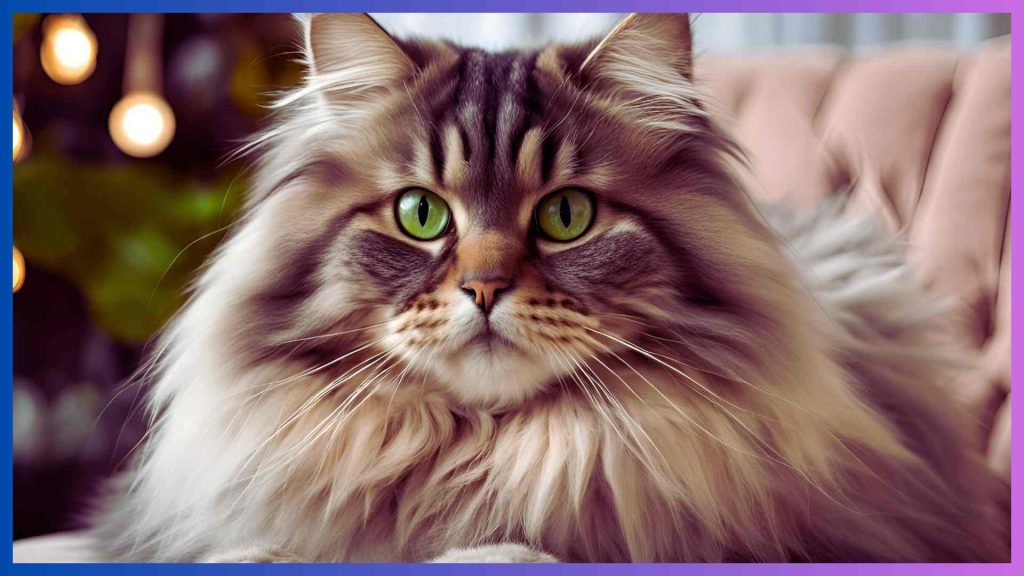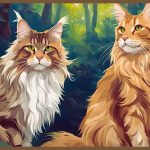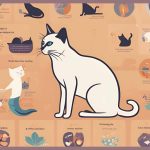When you enter the world of cats, the Chinchilla Siberian cat is a standout. It’s like a unique snowflake among regular pets. This breed has a striking look and a mysterious past. It has won the hearts of many cat lovers worldwide.
If you’re interested in these fluffy cats, get ready for an exciting journey. We’ll explore the amazing story of the Chinchilla Siberian cat together.
Introduction to Chinchilla Siberian Cats
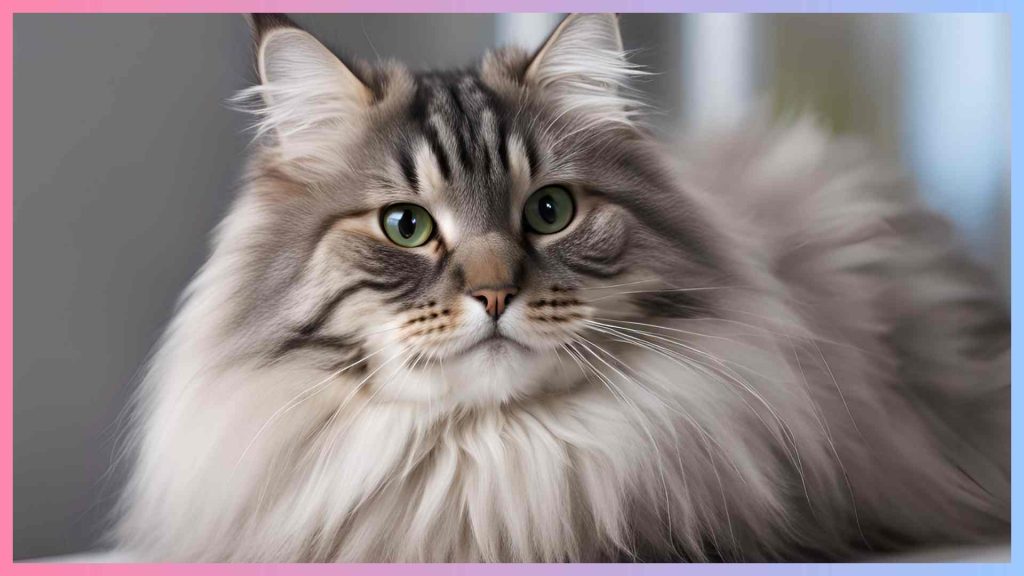
Exotic pet companions like the Siberian cat are winning the hearts of many. This large, muscular breed has a thick, dense double coat perfect for cold climates. With a history of living with humans for over 1,000 years, the Siberian is known as Russia’s national cat.
Breed Overview
The Siberian cat stands 17-25 inches tall and weighs 8-17 pounds. They live for 11-18 years. With their variety of colors and patterns, they add beauty to any home. They are great for families looking for a friendly and playful pet.
Siberian Kittens
Siberian kittens are bigger than most due to their sturdy build. They take longer to mature, reaching full size in 5 years. These fluffy furballs are smart and interactive, making them perfect lifelong friends. It’s best to buy from trusted sellers or consider adopting a Siberian kitten.
| Feline Breed | Weight Range (lbs) | Height Range (inches) |
|---|---|---|
| Maine Coon | 10-18 | 10-16 |
| Savannah | 12-25 | 10-17 |
| Ragdoll | 10-20 | 9-11 |
| Norwegian Forest | 12-20 | 9-12 |
| Bengal | 8-18 | 8-10 |
| Siberian | 10-20 | 9-11 |
| American Bobtail | 7-16 | 9-10 |
| Ragamuffin | 8-20 | 9-12 |
| Persian | 7-12 | 8-10 |
| Turkish Van | 8-18 | 10-14 |
The Magnificent Chinchilla Coat Pattern
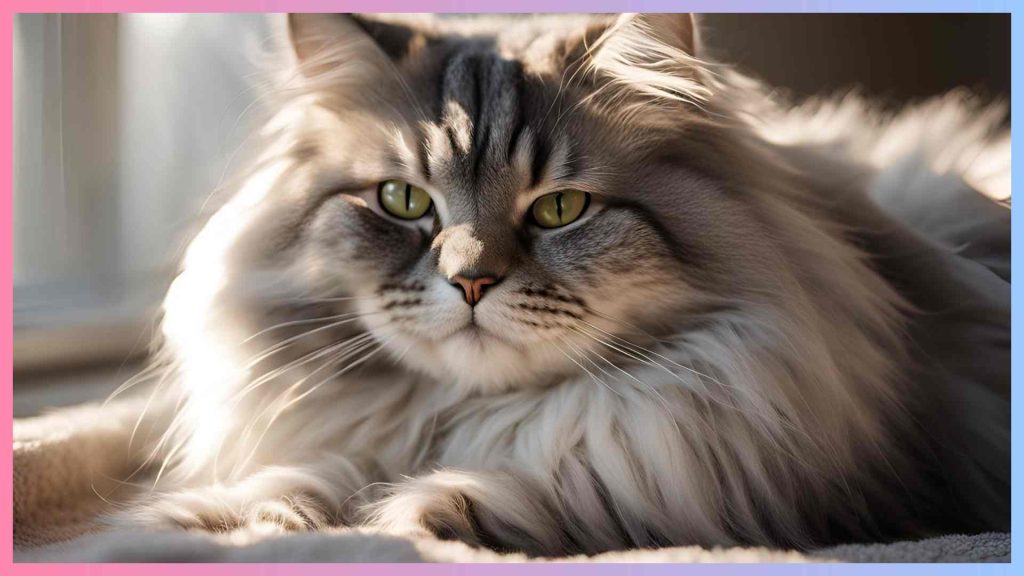
The chinchilla Siberian cat is a standout among longhaired cat breeds. Its coat pattern is truly captivating. These cats have a dense, light undercoat that’s lightly tipped with deep black on their tail, legs, flanks, back, and head. This creates a shimmering, sparkling effect.
Characteristics of the Chinchilla Pattern
The chinchilla pattern is one of eight recognized coat patterns for Siberian cats. Other patterns include solid, shaded, smoke, tabby, point, lynx point, and bi-color. These cats are loved for their fluffy coats and charming nature. They are a favorite among cat lovers.
- The chinchilla pattern is achieved through a dense, light undercoat lightly tipped by a deep black on the tail, legs, flanks, back, and head.
- This unique coat pattern produces a sparkling, shimmering effect, giving the chinchilla Siberian cat a truly distinctive appearance.
- Siberian cats are known for their diverse range of coat patterns, with the chinchilla being one of the rarer and more sought-after variations.
If you’re drawn to the chinchilla’s mesmerizing sheen or simply captivated by Siberian cats, these fluffy furballs will win your heart. They will become a beloved member of any feline-loving household.
Temperament and Intelligence
The Siberian cat is known for its smart and loving nature. These family-friendly felines love to play with people, making them great for families. They also get along well with other pets, even dogs, if they meet them young.
Studies show Siberians are among the smartest cats. They can find hidden treats and figure out how to get them. Their curious and calm nature makes them perfect for homes with many pets. Plus, they are less scared than other cats, which is good for families.
| Trait | Siberian Cats |
|---|---|
| Temperament | Affectionate, Calm, Gentle |
| Intelligence | Highly Problem-Solving, Excellent at Figuring Out Treats |
| Sociability | Very Sociable, Suitable for Households with Children and Other Pets |
| Fearfulness | Less Likely to Display Fearfulness Compared to Other Breeds |
In summary, the Siberian cat’s siberian cat temperament, smarts, and friendly nature make them an amazing pet. They are loyal, loving, and very intelligent.
Chinchilla Siberian Cats: Care and Grooming Needs
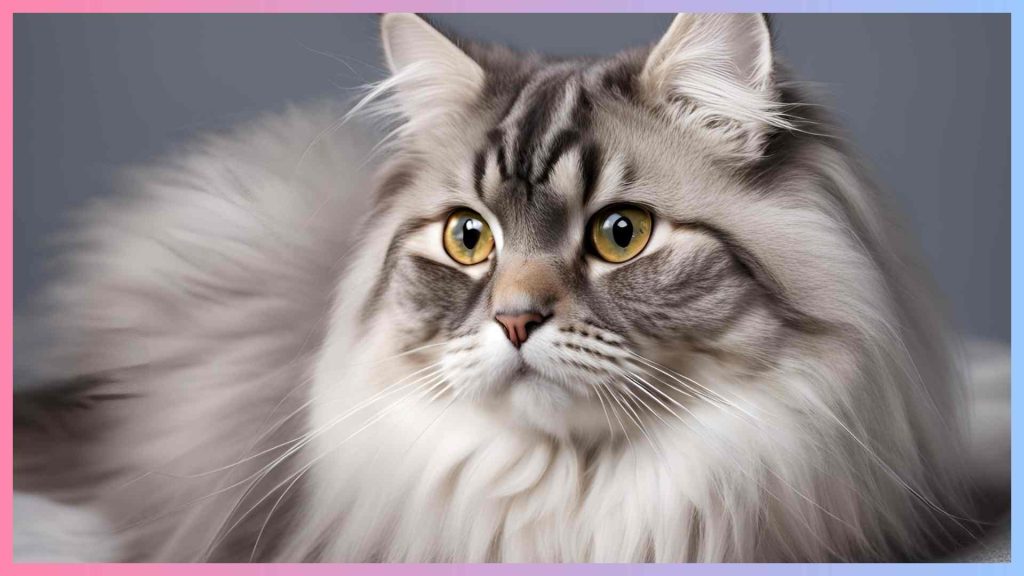
Siberian cats have a stunning coat that looks like chinchilla fur. They need special care to keep their coat looking great. Owners must give them a balanced diet and lots of exercise.
Diet and Nutrition
Siberian cats love to eat and need a diet that’s high in energy. Kittens should eat a special food that has lots of protein and fat. As they grow up, they can eat twice a day, with food that’s rich in animal proteins.
It’s also key to keep their water clean and fresh. They need about 4 ounces of water for every 5 pounds of their body weight. Canned food can help them stay hydrated.
Exercise Requirements
Siberian cats are very playful and need daily play and mental challenges. They love toys and games that make them think. Even though they can go outside, it’s best to keep them indoors for their safety.
Grooming the Lush Coat
Siberian cats have a thick coat that sheds a lot, so they need regular brushing. Brushing them a few times a week keeps their coat looking good and prevents mats. It’s also important to check their nails and ears to prevent infections.
Regular grooming helps them get used to being handled, which is good for vet visits.
| Breed | Hypoallergenic | Coat Characteristics | Personality |
|---|---|---|---|
| Siberian Cat | Yes | Dense, triple coat, medium-long fur | Playful, intelligent, adaptable |
| Siamese Cat | Yes | Short, silky coat, minimal shedding | Vocal, affectionate, curious |
| Bengal Cat | Yes | Short, dense coat, water-resistant | High-energy, intelligent, adventurous |
| Russian Blue Cat | Yes | Short, dense, plush coat | Gentle, reserved, loyal |
Conclusion
The Siberian cat is a unique and captivating breed with a long history in Russia. It has a muscular build, fluffy coat, and charming personality. This makes it an excellent companion for families and individuals.
Whether you love the rare chinchilla pattern or the breed’s intelligence and affectionate nature, there’s much to love. Siberian cat enthusiasts find this breed remarkable.
With the right care, grooming, and enrichment, Siberians can thrive as family pets for many years. They are popular exotic pets in the United States. Their fluffy furballs and adaptability make them a favorite among enthusiasts.
If you’re thinking of getting a Siberian, be ready to be captivated by their unique charm and personality.
FAQ
Q: What is the Siberian cat’s ancestry?
A: The Siberian cat’s ancestor is the African Wild Cat. This is unusual, as it doesn’t fit the typical Siberian origin story. Yet, Siberians can handle cold well, much like the Maine Coon.
Q: What are the key characteristics of the Siberian cat?
A: Siberian cats are big and strong, with personalities similar to dogs. They have a thick, double coat for cold weather. They grow up to 17-25 inches tall and weigh 8-17 pounds. They live for 11-18 years.
Q: How do Siberian kittens differ from other breeds?
A: Siberian kittens are bigger than most because of their sturdy build. They take longer to grow up, reaching full size at 5 years old.
Q: What are the different coat patterns of Siberian cats?
A: The chinchilla Siberian cat is rare, with a coat that sparkles. Siberian cats come in eight patterns: solid, shaded, smoke, tabby, point, lynx point, bi-color, and chinchilla.
Q: How do Siberian cats compare to other breeds in terms of temperament and intelligence?
A: Siberian cats are very loving, smart, and love to play with people. They solve problems well and get along with dogs. They are very friendly to humans and rarely scared.
Q: What are the dietary and grooming needs of Siberian cats?
A: Siberian cats need a good diet at every stage of life. Their thick coat sheds and needs brushing to avoid tangles. Brush them a few times a week and check their nails and ears often.

